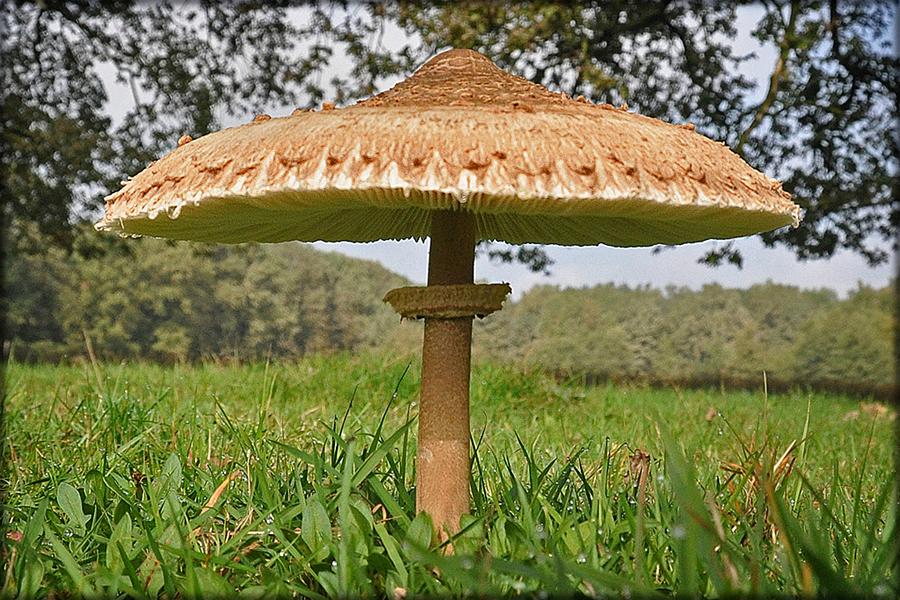Parasol mushroom: Red Data Book of Armenia

Category. EN – Endangered.
Brief description. Cap is 4–10 cm across, white with dark colouring in the centre, at first egg–shaped. When mature it is umbelliform, the upper part of which is covered with triangled, white scales. The margins of the cap are fimbriate. Gills are white, crowded, free. Flesh is white, when cut at the stipe base it reddens. It has smell of radish. Stipe 5–10 x 0,5–1 cm, at first dirty white, then brown, bulbous thickened at the base up to 1,2 cm with lacteous, large, moveable, fine ring. When dry both the stipe and the cap are brownish. Spore print is whitish. Spores are 8–9 x 5–5,5 µm, colourless, ellipsoid, smooth with germ–pores.
Distribution. Generally in Europe, Asia, Southern Caucasus (Armenia). In Armenia it is discovered in Yerevan floristic region – in the territory of "Khosrov" State Reserve; in Lori floristic region – in the surroundings of the town Stepanavan.
Ecological, biological and phytocenological peculiarities. It is rarely met, sometimes in groups, on the soil, in broad–leaved forests, on the altitude of 1100–1800 m above sea level, from August to September. Saprotrophic fungi on humus. The fruit bodies are edible. In some countries it is artificially grown in small quantities.
Main factors of endangering. Human economical activity.
Nature conservation measures. In Armenia it is conserved in corresponding ecosystems of “Khosrov” State Reserve. It is necessary to carry out monitoring of the state of discovered populations and discovering new biotopes as well. Collecting of the mushroom mycelium culture and artificial cultivation are possible.
Suggestions
 The Ministry of Environment sent a letter international partners to draw their attention to the real danger of environmental disasters as a result of Azerbaijan's large-scale aggression towards the territory of Armenia
The Ministry of Environment sent a letter international partners to draw their attention to the real danger of environmental disasters as a result of Azerbaijan's large-scale aggression towards the territory of Armenia
 Vicia pisiformis: Red Data Book of Armenia
Vicia pisiformis: Red Data Book of Armenia
 Vavilovia formosa: Red Data Book of Armenia
Vavilovia formosa: Red Data Book of Armenia
 Trigonella capitata: Red Data Book of Armenia
Trigonella capitata: Red Data Book of Armenia
 Trigonella astroides: Red Data Book of Armenia
Trigonella astroides: Red Data Book of Armenia












